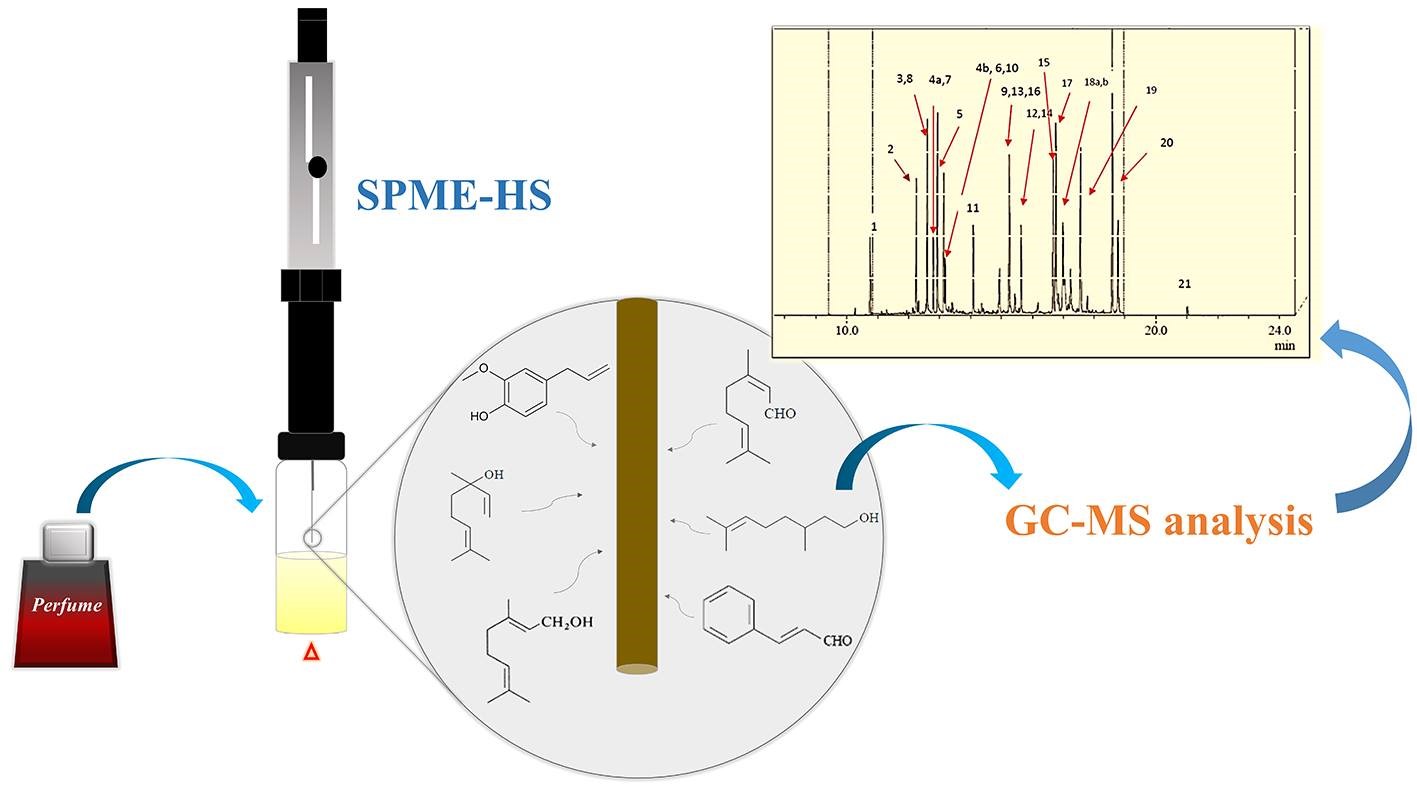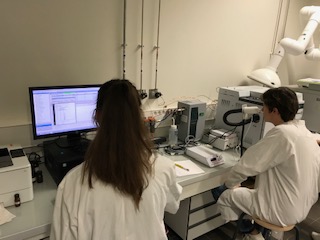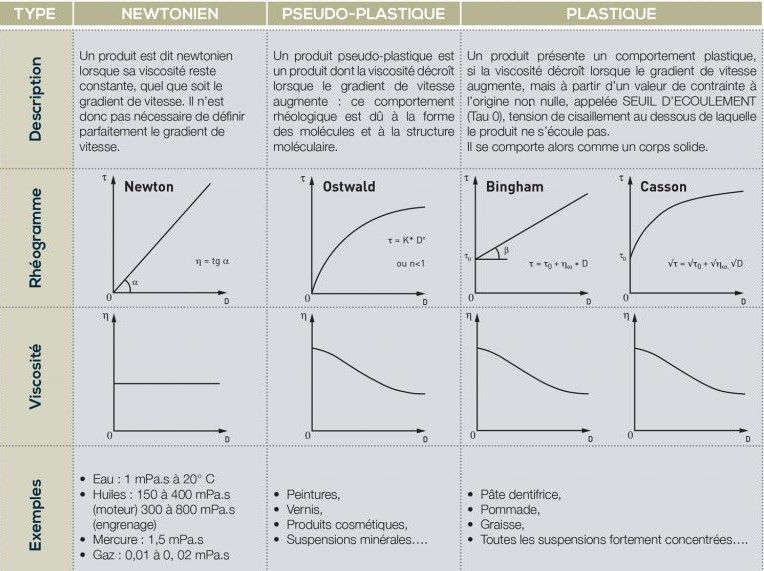Training structure
Faculty of Science
Program
Pigments, dyes and adsorbents: Structures and characteristics
2 creditsMicrobiology
2 creditsNatural aromatic raw materials: production
2 creditsPhysiology and practice of sensory analysis
2 creditsPhysics of color
2 creditsAnalysis of volatile molecules
2 creditsChemometrics, statistical data analysis, experimental design
2 creditsAromatics and perfumery regulations and formulation
2 creditsSeparative techniques
2 creditsNatural aromatic raw materials: control and appl
2 creditsProfessional projects - apprentice project follow-up
8 creditsChemistry of synthetic fragrance molecules 1
2 credits
Chemistry of synthetic fragrance molecules 2
2 creditsInnovative synthesis and extraction processes
2 creditsFormulating ingredients for perfumery
2 creditsAlternance
18 creditsBiosourced chemistry
2 creditsCommunication and professional integration
2 creditsFormulation of aromatic ingredients
2 credits
Pigments, dyes and adsorbents: Structures and characteristics
Study level
BAC +4
ECTS
2 credits
Training structure
Faculty of Science
This teaching unit is dedicated to the acquisition of concepts related to pigments, dyes and adsorbents, from the point of view of their structures and applications. Emphasis is placed on applications in the fields of flavors & fragrances (food colorants, perfumery) and cosmetics (hair dyes, powders, toothpastes, etc.). Some sessions are specific to each of the two pathways (P1, Cosmetics Engineering; P2, Flavors & Fragrances) of the Master's degree in Chemistry specializing in Cosmetics, Flavors and Fragrances Engineering (ICAP). The course comprises lectures and tutorials.
Hourly volumes* :
CM: 10 h
TD: 10 h
Microbiology
Study level
BAC +4
ECTS
2 credits
Training structure
Faculty of Science
Some basic microbiological principles will be covered, giving students an overview of the diversity of microorganisms. Bacteria's mode of nutrition and multiplication as a function of physico-chemical environmental parameters will be studied.
The composition and role of skin and digestive microbiota will be discussed.
The microbiological criteria used for quality control of cosmetics and food products will be defined.
Physical and chemical antimicrobial agents to control microbial development will be examined.
On a practical level, students will be expected to know how to handle bacteria and be familiar with microbiological safety rules. Usual microbiological control techniques and preservative efficacy tests will be carried out on cosmetic products.
Hourly volumes* :
CM: 12h
Practical work: 8h
Natural aromatic raw materials: production
Study level
BAC +4
ECTS
2 credits
Training structure
Faculty of Science
- Terms and definition of natural raw materials (ISO/TC54 "Essential oils")
- Extraction methods for volatile constituents: obtaining essential oils, flavor extraction, supercritical CO2 extraction, ESAM process, VMHD extraction, headspace extraction techniques, SPME...
- Characterization of volatile constituents: Gas Chromatography (GC), Ultra Fast Gas Chromatography (UFGC), Flame Ionization Detector (FID), Gas Chromatography-Mass Spectrometry (GC-MS), GC-FTIR, Comprehensive two-dimensional gas chromatography (GC-GC), chiral chromatographic analysis, GC-olfactometry, electronic nose.
Hourly volumes* :
CM: 12h
Practical work: 8h
Physiology and practice of sensory analysis
Study level
BAC +4
ECTS
2 credits
Training structure
Faculty of Science
Course: Study of gustation and olfaction (reception and transmission of messages, coding of information, psychophysiological importance), notions of sensory analysis.
Practical work: Learning referents used in perfumery and aromatics. Description, comparison, memorization, determination of recognition thresholds, application of the notion of olfactory power and volatility to the search for agreements.
Hourly volumes* :
CM: 12h
Practical work: 8h
Physics of color
Study level
BAC +4
ECTS
2 credits
Training structure
Faculty of Science
This UE covers :
- the fundamentals of colorimetry, which defines an unambiguous measure of color based on psychophysical experiments.
- the principle and practical use of color measuring devices (colorimeters and spectro-colorimeters).
- the principles of color reproduction, particularly in the context of perfumes and cosmetics.
Theoretical ideas are complemented by a significant amount of observation and experimentation in the short practical sessions.
Hourly volumes* :
CM: 12h
Practical work: 8h
Analysis of volatile molecules
Study level
BAC +4
ECTS
2 credits
Training structure
Faculty of Science
Knowledge of gas chromatography and mass spectrometry techniques with electron impact ionization and quadrupole mass analyzer for the analysis of volatile organic molecules.
1) GC-MS analysis of volatile organic compounds :
- Electron impact ionization (EI) techniques
- Chemical ionization (CI) techniques
- Quadrupole (Q) analysis techniques
- GC/MS coupling
2) Applications in organic chemistry analysis and characterization of volatile samples.
Hourly volumes* :
CM: 15 H
TD: 5 H
Chemometrics, statistical data analysis, experimental design
Study level
BAC +4
ECTS
2 credits
Training structure
Faculty of Science
This course covers the fundamental concepts and practical tools of chemometrics through : - statistical data analysis ;
- probability laws ;
- confidence interval estimation ;
- parametric and non-parametric tests.
An introduction to experimental design will be offered at the end of the module.
Hourly volumes* :
CM: 7h
TD: 13h
Aromatics and perfumery regulations and formulation
Study level
BAC +4
ECTS
2 credits
Training structure
Faculty of Science
- Introduction to the major fragrance families (SFP Classification)
- Perfumery regulations.
- Learn how to formulate "typical" bases for perfumery or aromatics.
Hourly volumes* :
CM : 10h
TD : 8h
Separative techniques
Study level
BAC +4
ECTS
2 credits
Training structure
Faculty of Science
This course is designed to teach liquid and gas chromatography.
Hourly volumes* :
CM :15h
TD: 5h
Natural aromatic raw materials: control and appl
Study level
BAC +4
ECTS
2 credits
Training structure
Faculty of Science
- International market for natural aromatic raw materials, main production
- Main olfactory families
- Study of natural aromatic raw materials: chemical and olfactory characteristics
- Control of essential oils according to AFNOR standards
Hourly volumes* :
CM: 12h
Practical work: 8h
Professional projects - apprentice project follow-up
Study level
BAC +4
ECTS
8 credits
Training structure
Faculty of Science
The M1 ICAP student apprentice is placed in a professional situation to carry out a project in response to an industrial problem. This project will be carried out under the responsibility of a member of the teaching team (academic or industrial). Carried out throughout the semester, this project aims to put into practice the knowledge and skills acquired during the Bachelor's and early Master's courses. In addition to their chemistry-disciplinary skills, students will also acquire the interpersonal, organizational and communication skills intrinsically linked to project management, preparing them for their future professional life.
_346x584.jpg)
Example of an industrial problem: assessing the oxidative stability of fragrance ingredients in the presence of antioxidants.

Example of an industrial problem: analysis of allergens in perfumes: headspace (HS) solid phase microextraction (SPME) technique followed by gas chromatography-mass spectrometry (GC-MS) analysis.

Examples of industrial problems: detection and identification of compounds responsible for off-flavours using gas chromatography coupled with olfactometry.

Examples of industrial problems: Know and know how to use the essential physico-chemical analysis techniques used to control a finished product.
Hourly volumes* :
CM: 5h
TD: 5h
Practical work: 40h
Chemistry of synthetic fragrance molecules 1
Study level
BAC +4
ECTS
2 credits
Training structure
Faculty of Science
Fragrance molecules are the raw materials needed to create a perfume. This course is designed to provide students pursuing a degree in fragrance and flavor engineering with the fundamentals they need in this field.
Hourly volumes* :
CM: 12h
Practical work: 8h
Chemistry of synthetic fragrance molecules 2
Study level
BAC +4
ECTS
2 credits
Training structure
Faculty of Science
Study the major chemical families of odorant molecules from a chemical and olfactory point of view.
Acquire fundamental knowledge in the field of industrial synthesis and hemisynthesis of odorant molecules, their olfactory characteristics and their applications in Aromatics and/or Perfumery.
Hourly volumes* :
CM: 12h
TD : 8h
Innovative synthesis and extraction processes
Study level
BAC +4
ECTS
2 credits
Training structure
Faculty of Science
This teaching unit is shared with MI students in the Chemistry Master's courses: ICAP P1, ICAP P2, MAT P1, MAT P2, BM (semester S2). The following topics will be covered:
- The 12 Principles of Green Chemistry and units of measurement in Green Chemistry ;
- Synthesis strategies for sustainable chemistry ;
- Alternative or eco-compatible solvents for synthesis and extraction;
- Non-conventional activation techniques and applications.
CM: 13
TD: 7 H
Formulating ingredients for perfumery
Study level
BAC +4
ECTS
2 credits
Training structure
Faculty of Science
Fragrance formulation
Study of constraints related to the target application (stability, physico-chemical properties, cost, regulations, etc.)
Application
Hourly volumes* :
CM: 12h
TD : 8h
Alternance
Study level
BAC +4
ECTS
18 credits
Training structure
Faculty of Science
Work as a work-study student during the academic year in an R&D, analysis or quality control laboratory in fragrance or flavor-related industries.
Biosourced chemistry
Study level
BAC +4
ECTS
2 credits
Training structure
Faculty of Science
The following topics will be covered:
- Biobased solvents
- Biomass fuels
- Antioxidants derived from lignin
- Metal catalysts from plants
- Surfactants obtained from renewable resources
- Examples of industrial applications of enzymatic synthesis
Hourly volumes* :
CM: 15
TD : 5
Communication and professional integration
Study level
BAC +4
ECTS
2 credits
Training structure
Faculty of Science
In small groups or on a one-to-one basis, this course will cover pedagogical tools and best practices relating to communication and professional integration, through :
- assessments of knowledge, skills, competencies, attitudes and motivations;
- awareness of job search techniques ;
- CV and cover letter writing ;
- rules of oral and written communication ;
- mock job interviews.
Students will be able to take part in role-playing exercises directly linked to the sectors targeted by their career paths.
Practical work: 20h
Formulation of aromatic ingredients
Study level
BAC +4
ECTS
2 credits
Training structure
Faculty of Science
Evaluation of the aromatic power of the main aromatic ingredients.
Direct and retronasal olfactory comparison.
Influence of the medium on perception.
Formulation of aromatizers and applications on food supports with the help of an aromatician. Regulatory constraints.
Hourly volumes* :
CM: 12h
TD : 8h
Admission
How to register
- Nationals and European Community: "My Master" on https://www.monmaster.gouv.fr/


